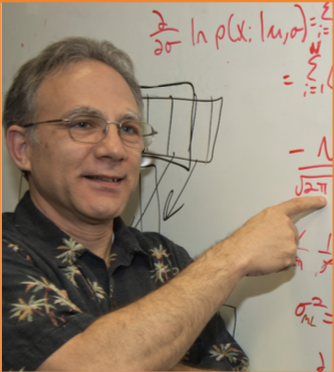Time: 3:30PM
Date: November 9th, 2017
Location: NEB 100
Bio: Paul Gader is a Professor and former department chair in the
CISE department and an Affiliate Professor in ESSIE at UF. His research has
ranged from Mathematics to operational Machine Learning beginning with
developing algorithms for detecting bridges in Forward Looking Infrared
imagery in 1984. He received a Ph.D. in Math in 1986 at UF for parallelizing
image processing algorithms using matrix factorization. His faculty
positions include Math at the University of Wisconsin – Oshkosh and ECE at
the University of Missouri and a visiting professor in Image & Signal
Processing at the Grenoble Institute of Technology in France and in
Computer Science and Geography at the UC – Santa Barbara. He worked in
industry as a research scientist, manager, and technical program lead at Honeywell and the Environmental Research Institute of Michigan. He has published over 100 journal and over 300 total papers, was an Associate Editor of IEEE Geoscience & Remote Sensing Letters, led an ad-hoc committee on Standardized Algorithms, Data, & Evaluation (SADE), enjoyed a three-year term as a UF Research Foundation Professor and is a Fellow of the IEEE.
Abstract: Imaging spectroscopy is a field that is based on using
imaging spectrometers to measure light in tens or hundreds of
spectral bands. These measurements are referred to as spectra or
spectral pixels if the location within an image is included. They are
represented as vectors, xn, denoting the spectrum in the nth pixel
location. The collection of spectral pixels is referred to as a
hyperspectral image. The bands are typically 5-10 nanometers (nm)
wide. By contrast, high-end cameras, typically have bands ranging
from 100 nm to over 200 nm. Spectrometers are usually mounted on
air- or space-borne platforms. Narrow spectral bands implies fewer
photons per band resulting in low signal power. To increase power, the spatial resolution of the spectrometer needs to be relatively large. The unique characteristic of imaging spectroscopy, compared to image processing, is that materials can be identified and properties of materials calculated using single spectra. The low spatial resolution results in measured spectra produced by physical “mixing” of the light reflected from multiple materials in the spatial region of a spectral pixel. Algorithms for imaging spectroscopy must be designed to identify and characterize materials at a sub-pixel level. Mathematically, the problem is Given: a hyperspectral image X with pixels x1, x2,…, xN a mixing model, xn = f(e1, e2,…, eM; pn1, pn2, …,pnM) with: e1, e2,…, eM unknown spectra of “pure” materials in the scene pn1, pn2, …,pnM unknown proportions of pure materials at pixel n M << N Estimate: pn1, pn2, …,pnM, e1, e2,…, eM, and possibly M This is an ill-posed inverse problem referred to as unmixing; the objective is to invert f. The talk will cover a short history of attempts to solve this problem and a discussion of a current investigation into the suitability of deterministic vs. stochastic approaches.
